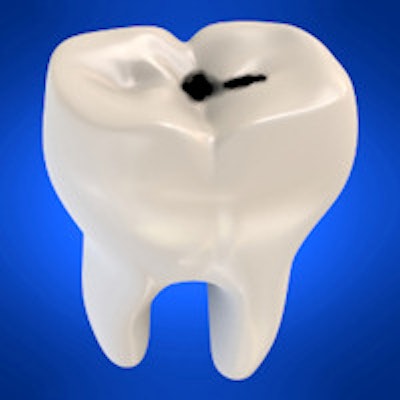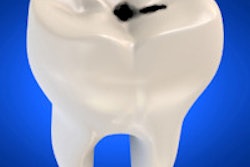
The Oregon Board of Dentistry's resolution to allow dental auxiliaries to apply silver diamine fluoride (SDF), which followed the recent classification of SDF as a fluoride by the U.S. Food and Drug Administration (FDA), could mean new treatment options, especially for Medicaid beneficiaries.
Under current Oregon law, dental hygienists and dental assistants can administer fluoride, but SDF was just cleared to be marketed as a fluoride to desensitize teeth roots by the FDA in August. And, since dental auxiliaries in most states are authorized to apply fluoride, they can now apply SDF.
The move was prompted in large part by Advantage Dental of Oregon, a dental insurer that provides coverage for more than 300,000 of the state's Medicaid beneficiaries.
Expanded-practice-permit dental hygienists in Oregon do not need a collaborative agreement to administer fluoride, noted the board's executive director, Patrick Braatz.
Braatz noted fluoride is a drug and must be administered by prescription.
"Many times dentists will give parents a prescription for fluoride tablets that they can get filled at a pharmacy and administer themselves," he told DrBicuspid.com. "But because [SDF] is a solution that needs to be brushed on teeth, it's normally done by a dentist or dental hygienists or dental assistants."
John Frachella, DDS, DMD, a Redmond, OR, dentist lauded the board's move.
"The Oregon Board's decision is an endorsement (at least of sorts) for those of us who would like to see more dentists consider the use of silver solutions as an adjunct, in addition to what they already do to help prevent and treat decay," Dr. Frachella wrote in an email to DrBicuspid.com.
Advantage Dental's CEO R. Mike Shirtcliff, DMD, said he has been trying to come up with a new way of preventing caries rather than just drilling and filling them.
 R. Mike Shirtcliff, DMD, Advantage Dental CEO. Image courtesy of Advantage Dental.
R. Mike Shirtcliff, DMD, Advantage Dental CEO. Image courtesy of Advantage Dental."One of the things we've learned over the years is that the surgical restorative dentistry paradigm doesn't work," he told DrBicuspid.com.
He noted that traditional preventive methodology, which teaches people how to change their behavior -- brush, floss, go to the dentist regularly, eat right -- doesn't work with people whose disease is out of control, especially with people who don't take care of their teeth or are clinically depressed.
"Everybody wants to beat up on dentists because they won't participate in the Medicaid program," Dr. Shirtcliff said. "I think they consciously or subconsciously understand that the paradigm of surgical restorative paradigm doesn't work -- just fixing the damage rather than looking at the disease."
He noted that the Affordable Care Act's rules require population-based healthcare, as opposed to individual healthcare.
"How do we help the overall community manage overall spending and health to accomplish the triple objective of better care and better health at better cost?" Dr. Shirtcliff said. "If we only fix the cavity and don't work on the infection, then we just get more cavities."
He noted that the majority of people understand what they have to do if they have caries and they have the resources to get treatment.
"But the bottom line is for people on Medicaid and the working poor, their disease is out of control," Dr. Shirtcliff noted. "Once the damage is so great, people who pay for their care don't have the resources to fix everything to the technical level we now have."
Using SDF is an investment, he explained, because for people with out-of-control dental disease, the cost is much greater.
Dr. Shirtcliff estimated it would cost $1 billion to provide needed dental care to Oregon's Medicaid population with the available technology for restorations like crowns, bridges, root canals, and implants.
"So what are we going to do, and how are we going to manage that population with the money and resources we have, rather than just say you have to do a perfect treatment plan on every patient?" he said. "If you're trying to get cavities under control without filling them, if you paint a silver compound like silver fluoride or silver nitrate on a tooth, it arrests the decay."
Although SDF has been around for some time, it was never cleared for market in the U.S. by the FDA until recently, Dr. Shirtcliff pointed out.
SDF has great potential as a treatment option, he said. "You can finally get the disease under control and then once the disease is under control, you can do restorations," Dr. Shirtcliff said. "It has the potential to last longer and not re-decay."
Steven Duffin, DDS, an Oregon dentist who has advocated SDF, also supported the move.
"It is my opinion that Advantage Dental has embraced both the technology (SDF) and the business philosophy that solves this chronically broken problem of disease and access to care for the Medicaid population," he wrote in an email to DrBicuspid.com.



















